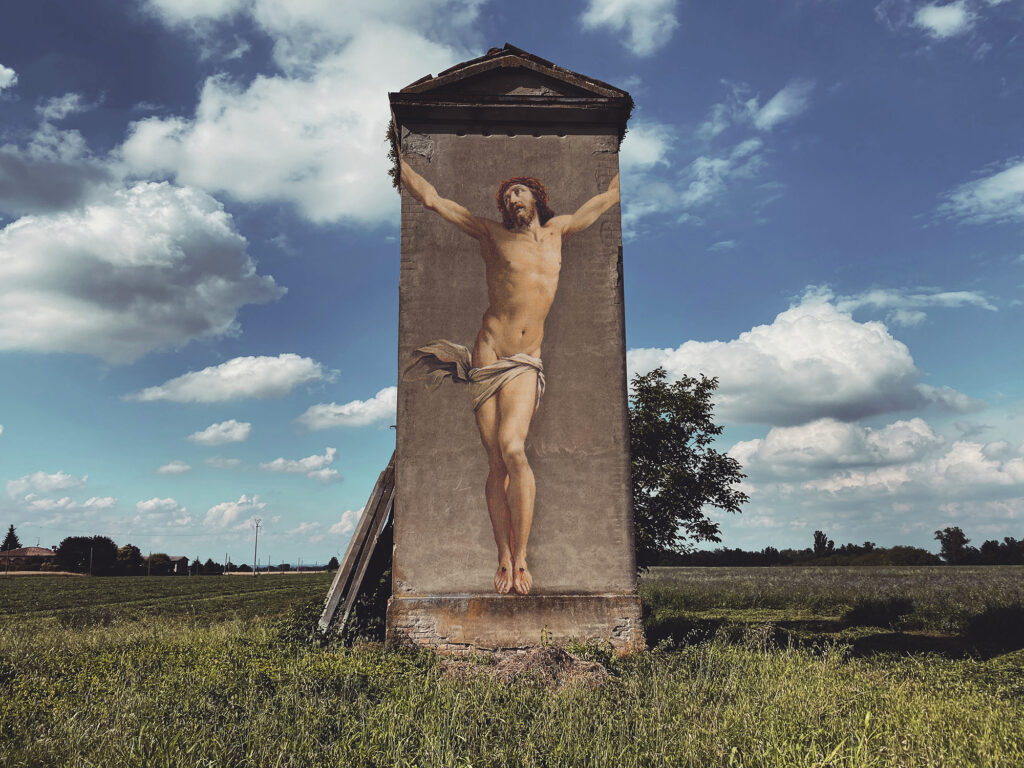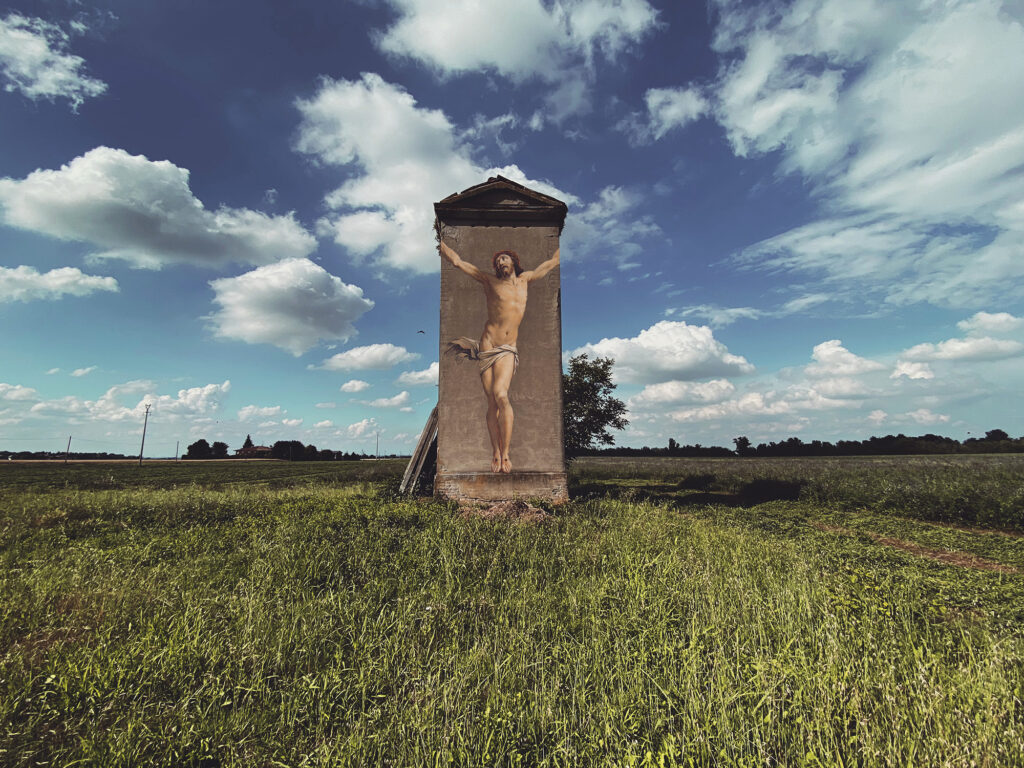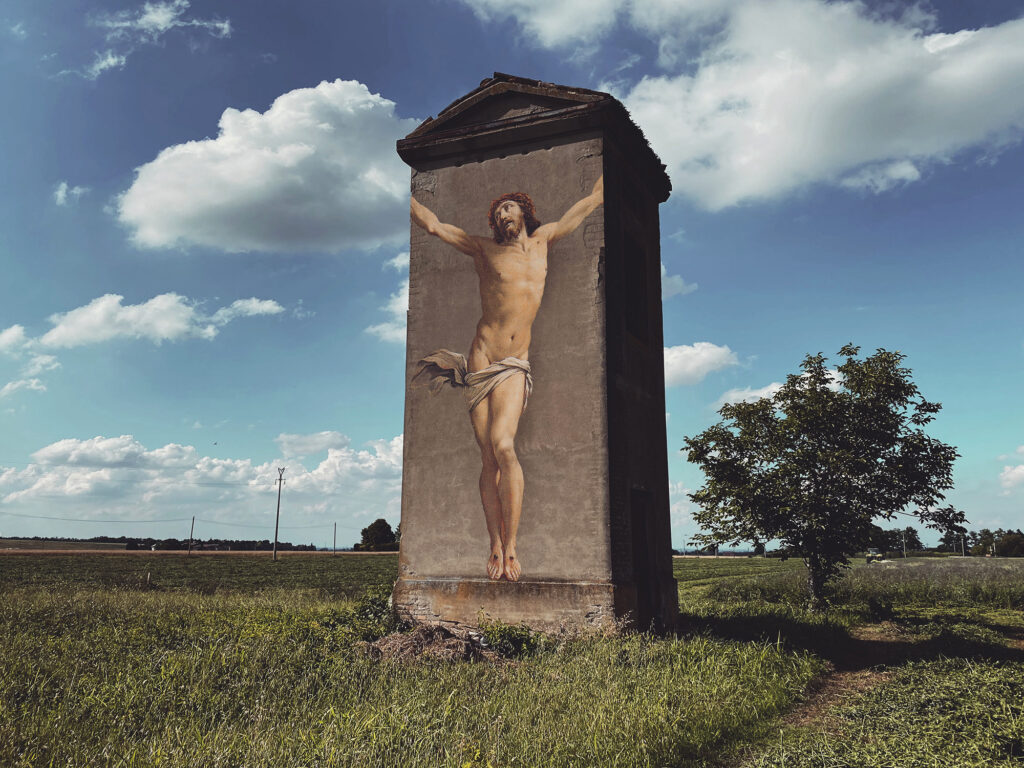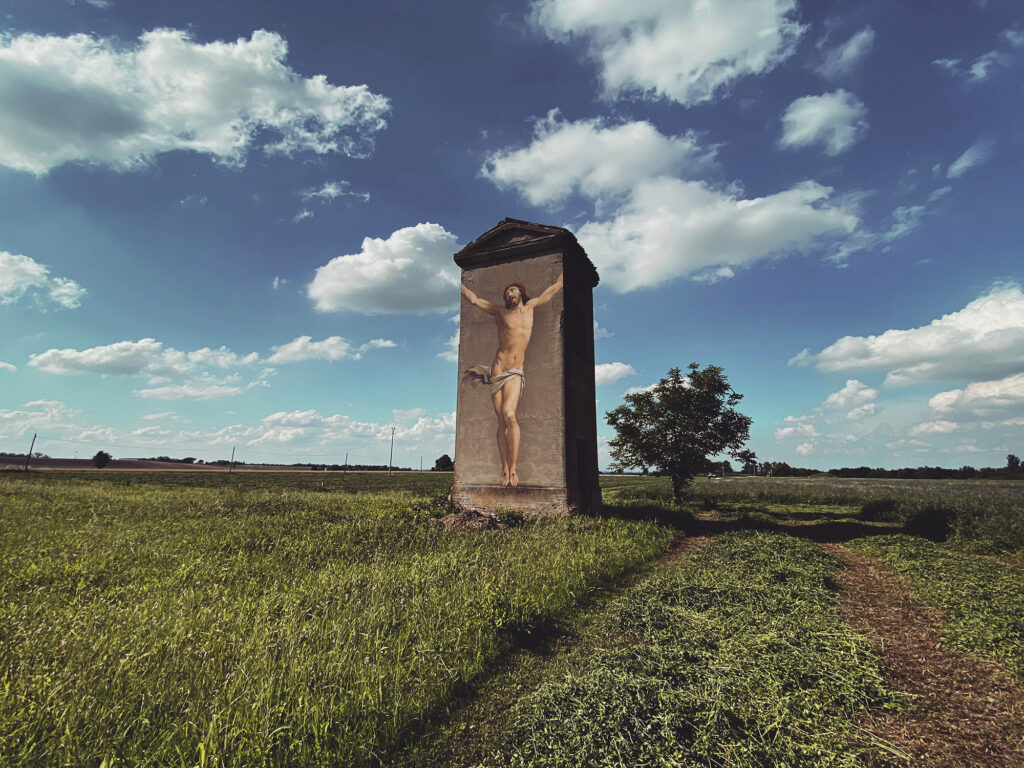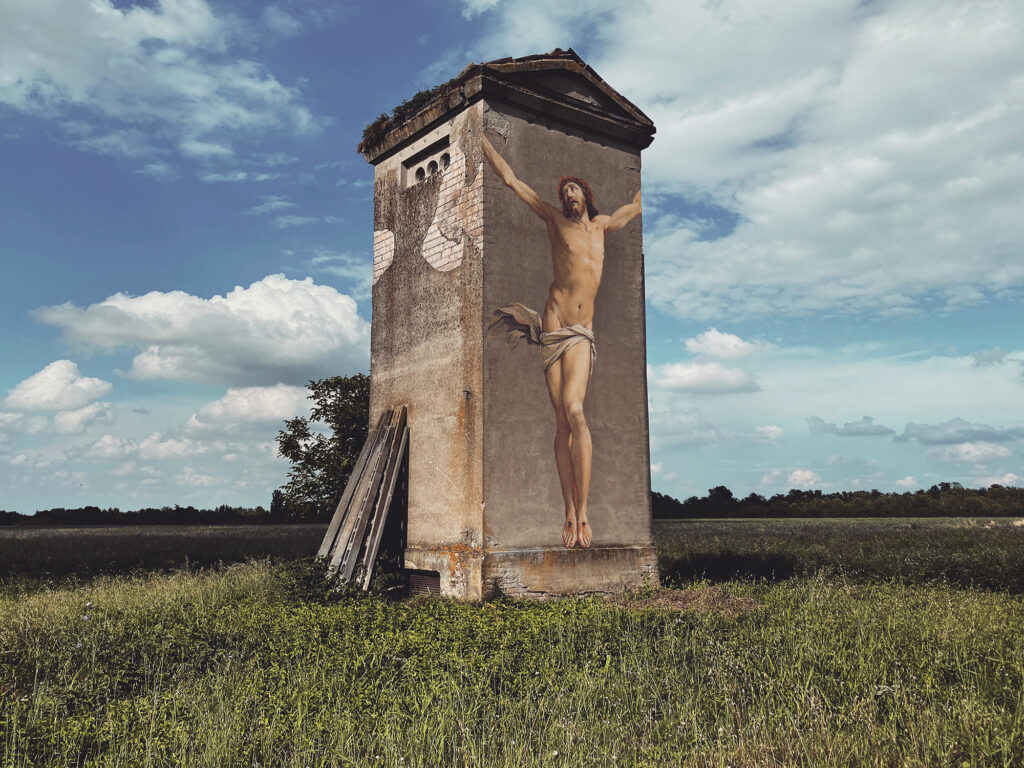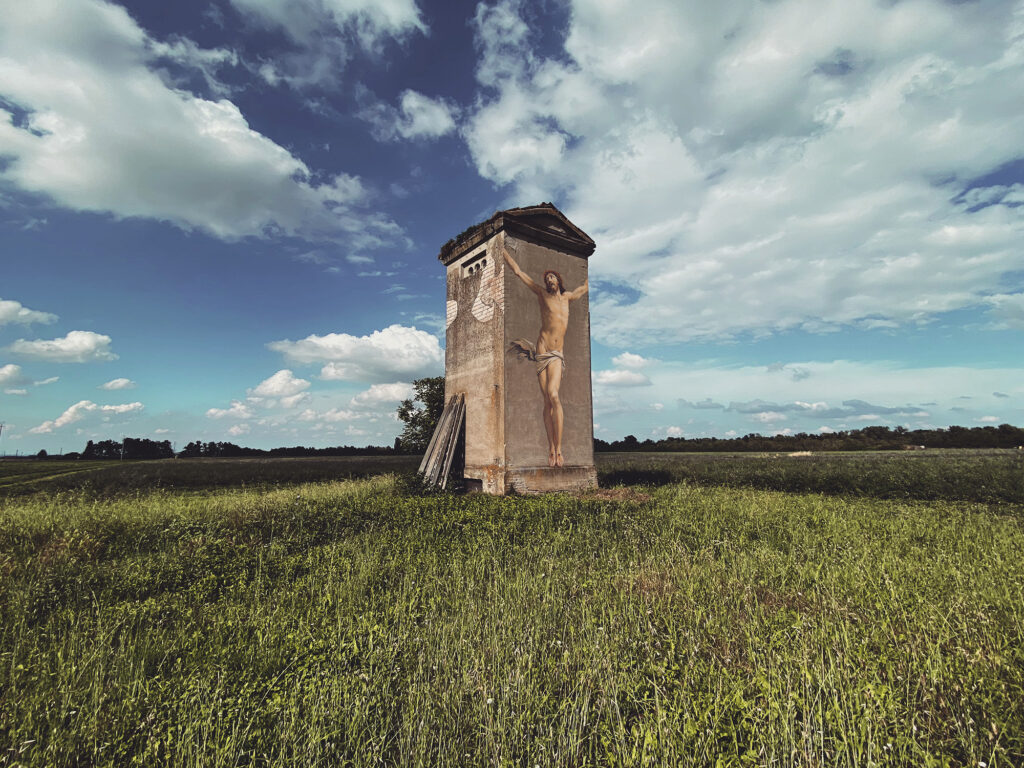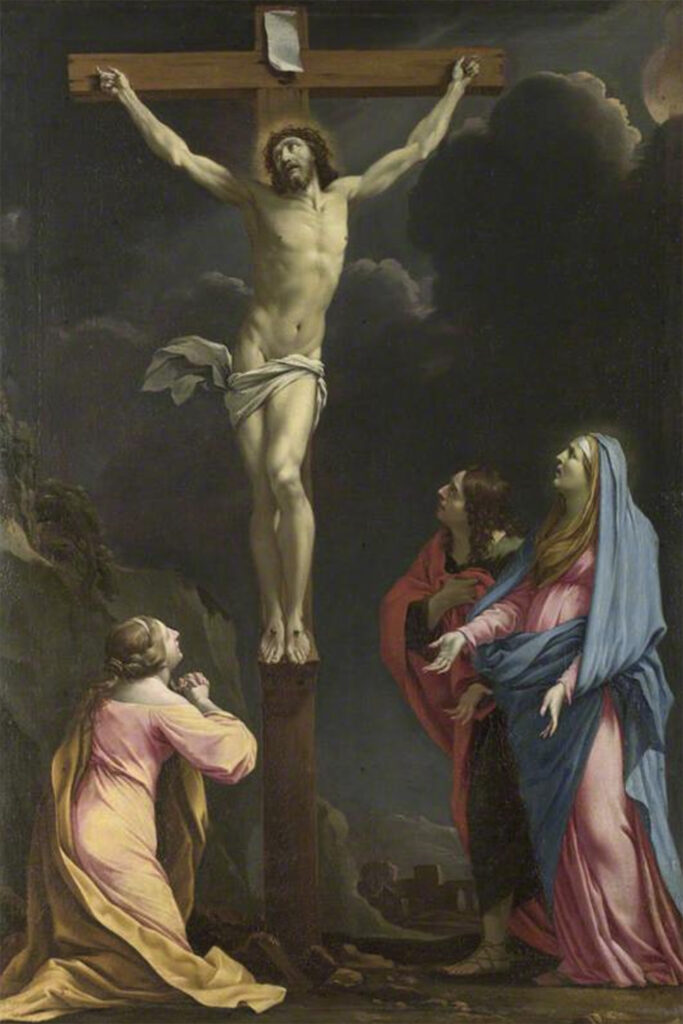Here is the first chapter of a series dedicated to pictorial works with a religious background, from the early Middle Ages to the eighteenth century. After a focused research on the volumes of the major European museums, our intent is to bring to new light these artworks which have indelibly marked the relationship between people and religious authority, instruments for the propagation of thought through superb mastery. A centuries-long journey has told of the divine, the eternal, the overcoming of earthly life through the idea of forgiveness, of consecration in the afterlife.
Christ on the Cross with the Magdalen, the Virgin Mary and Saint John the Evangelist. (Detail) Oil on canvas – about 1643 by Eustache Le Sueur (1615-1655) | The National Gallery – London.
Le Sueur shows us a moment described in the Gospel of John, when Christ speaks to his mother, the Virgin Mary, and his disciple, Saint John the Evangelist, just before he dies. Opposite them kneels Mary Magdalene, her hands clasped together in prayer. Their expressions, mouths slightly open and eyes widened in disbelief as they stare up at Christ, convey tension and grief. Behind them, darkening clouds add to the sombre mood. A strong light comes from the right, revealing the soft, pale tones of Christ’s body and the vibrancy of the figures’ robes. Le Sueur creates dramatic effect by placing the figures within a narrow space, with the viewer directly in front of the Cross and level with them. This composition was inspired by an earlier version created in Simon Vouet’s (1590–1649) studio, which is where Le Sueur had received his training. Le Sueur was developing his own style, and the way he experiments with facial expression and hand gestures to convey emotion in this painting distinguishes him from his master.
God knows I’m weak | Throw out the map – SE Vol. V | Emilia, Italy | May 27th 2024.
